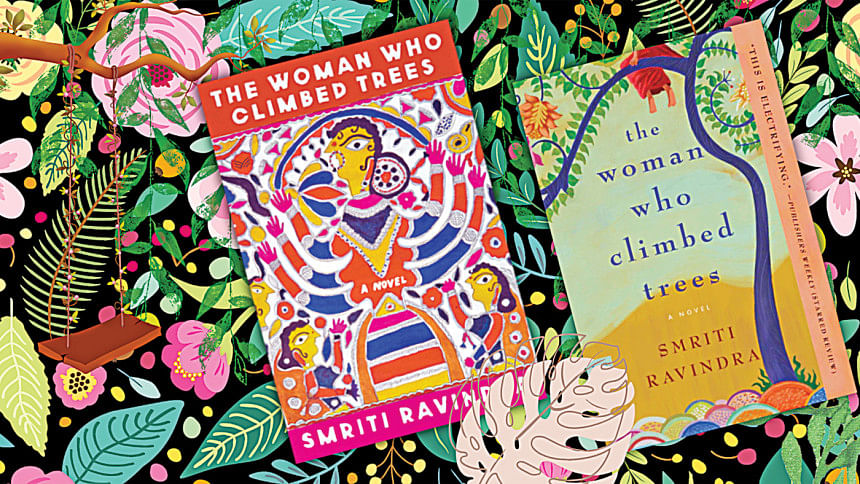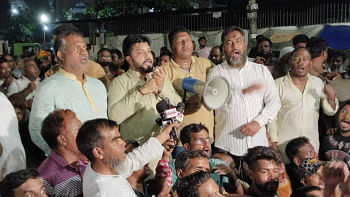Betwixt and between: Tales from a Nepali-Indian girlhood

Images of Nepal, lingering in the annals of social media and casual conversations with friends, often evoke conversations about natural beauty, spectacular architecture dotting its numerous hills, and intimate hospitality. Sandwiched between the behemoths, India and China, Nepal's history is a striking case of contradictions slaloming many structural challenges such as religious fundamentalism and ultranationalism engulfing the region today.
Nepal, very much like the fictional Shangri-La, remains mired in mystery with its deeply engorged stories, myths, folklore, and its storied lived experience—from the world's only Hindu Kingdom to South Asia's most vibrant democracy—largely unknown even to its most ardent supporters. It is in the last couple of years that Nepalese literature has grown, exposing us to the multifaceted complexities in the country itself.
First-time author, Smriti Ravindan weaves a tale in her novel, The Woman Who Climbed Trees, of striking clarity on the lives of the Indo-Nepal border focussing on the contested region of Madhesh, whose people have straddled along the border for the generations and have been seen as "outsiders" to the ruling Pahadi class in Kathmandu. Ravindan's story revolves around three women in the same family, with the first two women's destinies leading to them having respective families across the border. The story starts off with 14-year-old Meena, an Indian with a Nepali mother, Kaveri, as she is placed in an arranged marriage with the 21-year-old Manmohan, a Nepali undergraduate student and underground political activist based in India. "Eleven hours. Another town. Another country." This sets up the narrative for numerous entanglements, resilience, and resistance, with women's agency put front and center.
Ravindra's prose is brisk, smooth, and detailed, with numerous stories from traditional Nepali and Hindu folklore chipped in, adding layers as the story unfolds. Stories of Rama and Sita are evoked to showcase the eternal bond between the twin cities of Janakpur and Darbhanga, with Ram viewed as the groom who moved over to Janakpur to woo his bride, Sita.
The first half of the book showcases the inner psychological battle Meena faces to turn up as a dutiful wife and daughter-in-law to an increasingly absent husband and an overbearing mother-in-law. Struggling with her duties as a young bride, Meena finds solace in her sister-in-law, Kumud, trespassing and bringing to the surface the volatile yet budding notions of female desire, sisterhood, and the transgressions of relationships between women. It is in the second half of the novel that the reader is drawn into the beguiling intersectional complexities and divergence of class, power, gender, and citizenship, with the focus shifting to the capital, Kathmandu, as Meena goes through multiple miscarriages that test her status as a woman in society. With Manmohan climbing up the civil service ladder, he is increasingly taunted for being Madheshi (marsiya) and "Indian looking". The narrator of the story later on becomes the couple's daughter, Preeti. Preeti traverses the delicate terrain of generational trauma, narrating the story in first person and acting alternatively as a cynic and a cheerleader when it comes to understanding her family's numerous problems buffeted by the changing dynamics of Nepal's political system. Preeti acts as an additional commentator to her mother's feminine rage and anguish at a system that fails women, their desires, and forms of solidarity. The matriarch of the family, Kaveri, has her story lurk in the background, providing an anchor to understanding the multifaceted and silenced lives of Madheshi women across borders.
Ravindra's prose is brisk, smooth, and detailed, with numerous stories from traditional Nepali and Hindu folklore chipped in, adding layers as the story unfolds. Stories of Rama and Sita are evoked to showcase the eternal bond between the twin cities of Janakpur and Darbhanga, with Ram viewed as the groom who moved over to Janakpur to woo his bride, Sita. In the same vein, many facets of Nepali folklore are dissected, such as the story of Rani Pokhari, a large pond in Kathmandu, whose backstory lies in the tragic outcome of a royal family losing their one child.
Putting female characters at the center of the story, the novel brings to life with vivid audacity what it means to be a Nepali-Indian woman in a changing subcontinent where, till today, the battles of citizenship and gender rage on. A tale of belonging, attachment, displacement—the novel unpacks and lingers on the important question: "What is mother and motherland to a woman?"
Israr Hasan is currently working as researcher in a public health institute.

 For all latest news, follow The Daily Star's Google News channel.
For all latest news, follow The Daily Star's Google News channel. 



Comments